Laura Webb, Program Specialist
In a previous post, I mentioned that sifting through our object records let me find large batches of similar items, and compare and contrast them. When our digital collections go live, you’ll be able to do the same thing – but until then, let’s practice together!
Have you seen any of our Shaker rugs on exhibit before? You may have seen the “GOOD” rug, on display in the East Family Brethren’s Shop, or our “Horse Rugs” (one of which is now on display at the Speed Art Museum in Louisville). However, there are only so many examples of a type of object a museum can show in most exhibits. Sometimes museum curators choose to display an example of an object type that is the most well-known or special; sometimes they choose items that are the most “typical” representation. Either decision involves narrowing down many alternate choices. Using rugs for this exercise, let’s see what information we can gather!
- What do these rugs have in common with each other?
- If you’ve seen either (or both!) of our more “famous” rugs, what do these have in common with the ones below? What makes them different?
- Can you determine one, or several, overarching design themes?
- What colors are used most frequently? What materials? What is used more rarely?
- One of these rugs is depicted twice, in two different formats – can you find which one?
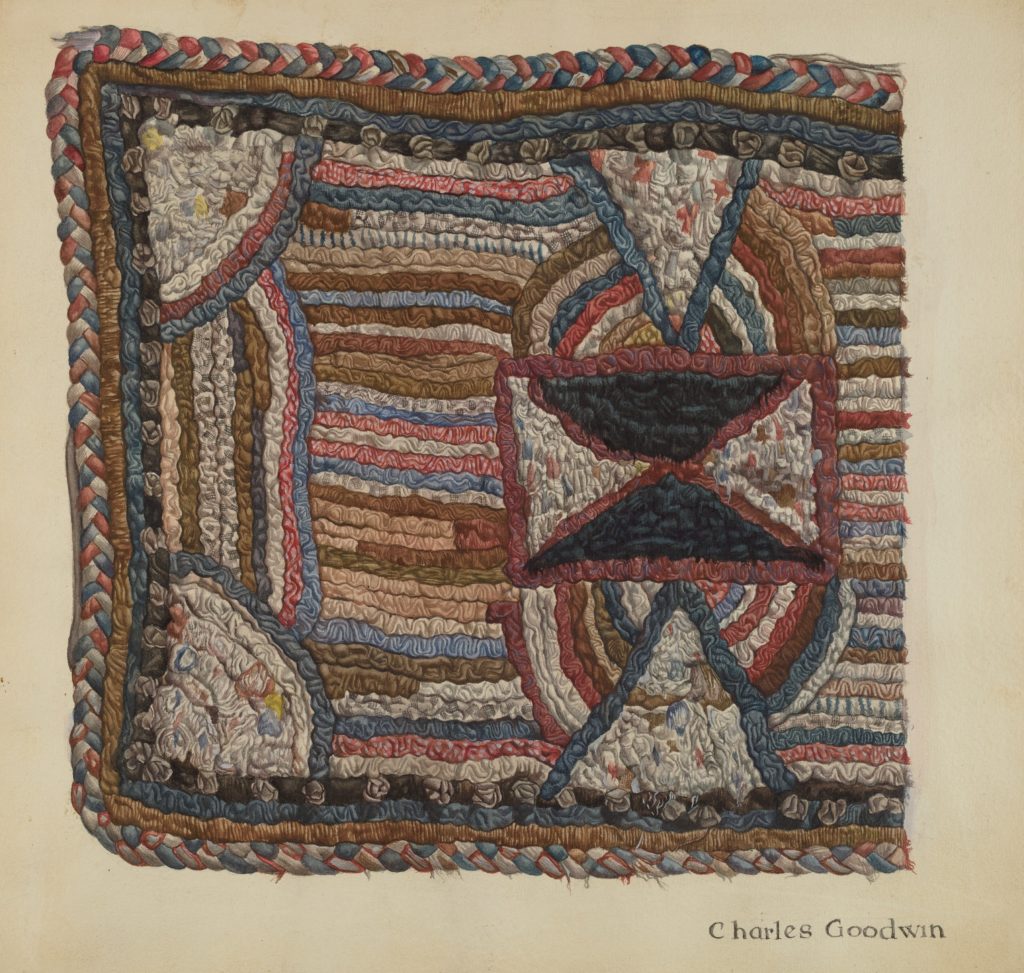

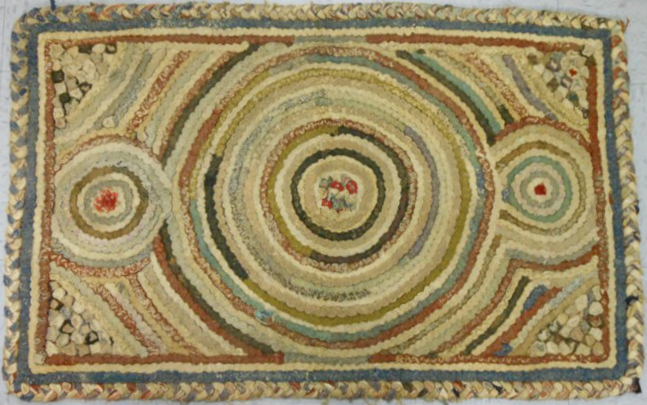
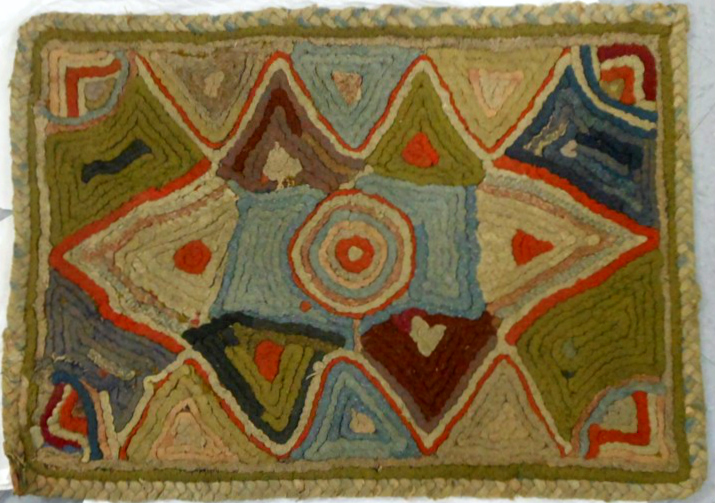

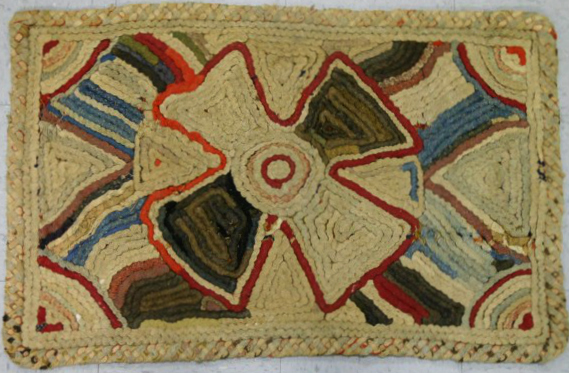
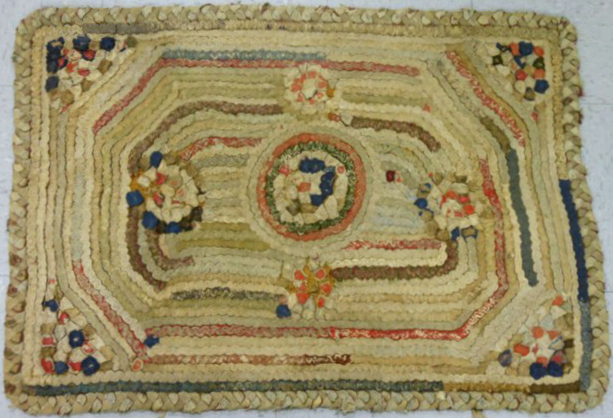

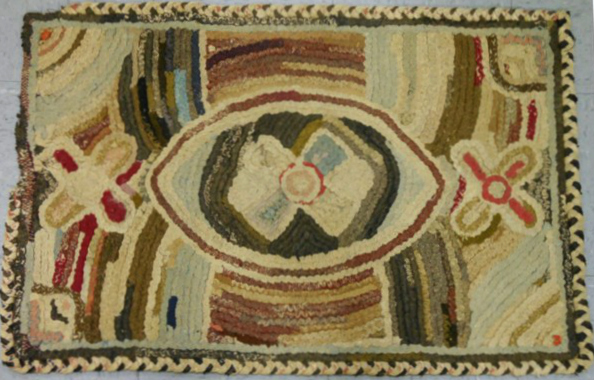
So, what did you notice? Here’s some context, courtesy of the object notes and descriptions on file:
Many of these rugs are called “dollar” rugs; this is because they are created with scraps of fabric in the size and shape of silver dollar coins. These scraps are then “shirred;” that is, threaded into strips resembling Hawaiian leis, or fuzzy caterpillars. Most are made from scraps of fabric of a variety of materials, many dyed in vibrant earth tones. However, while the phrase “rag rugs” usually evoke either the flat-woven rectangular form or the braided, round or oval form, these have a thick texture and complex forms, either in abstract or figurative designs.
Shaker Village of Pleasant Hill was awarded a CARES grant through The National Endowment for the Humanities in June 2020. Funding from this grant award supported two activities to enhance digital humanities initiatives at SVPH, including Laura Webb’s work to review our collection records and prepare them for publishing in a public digital database.